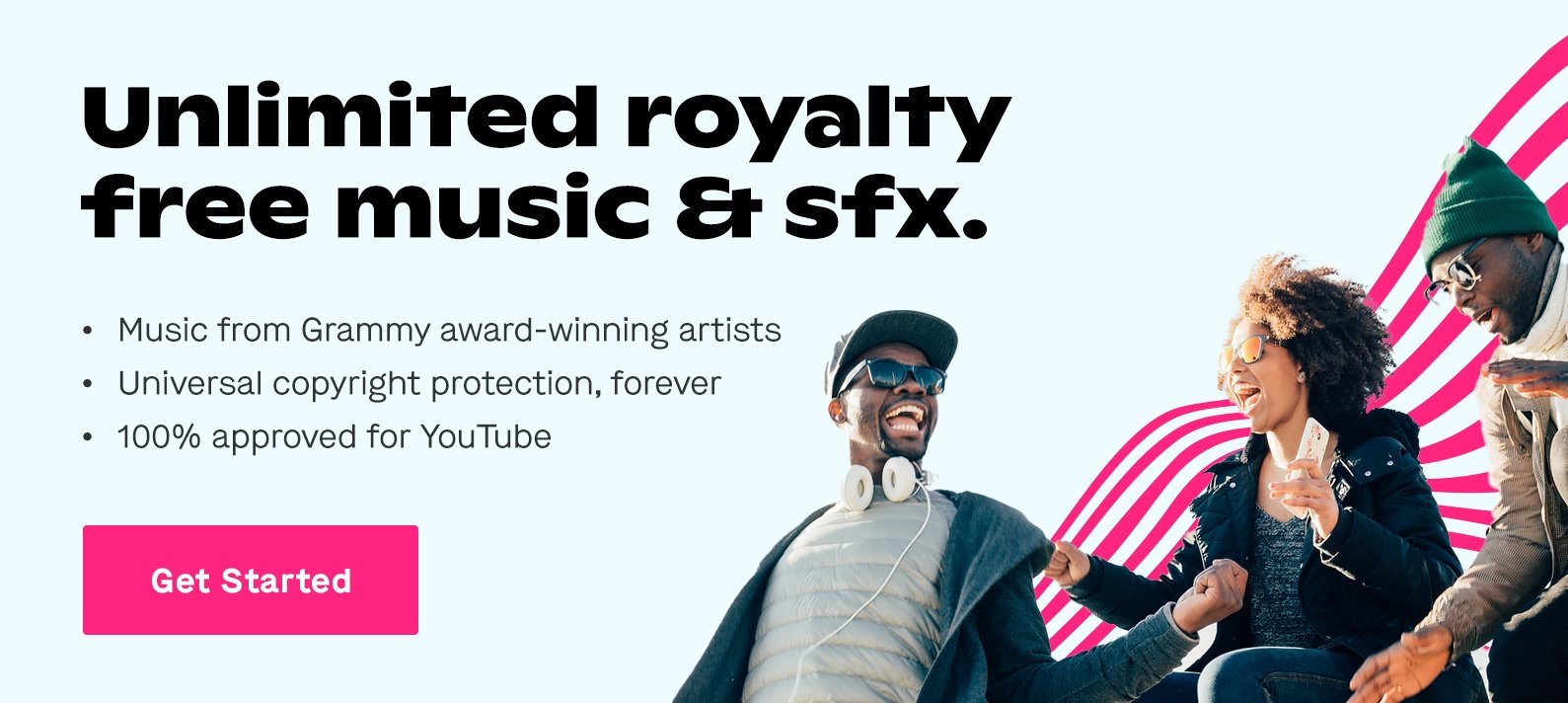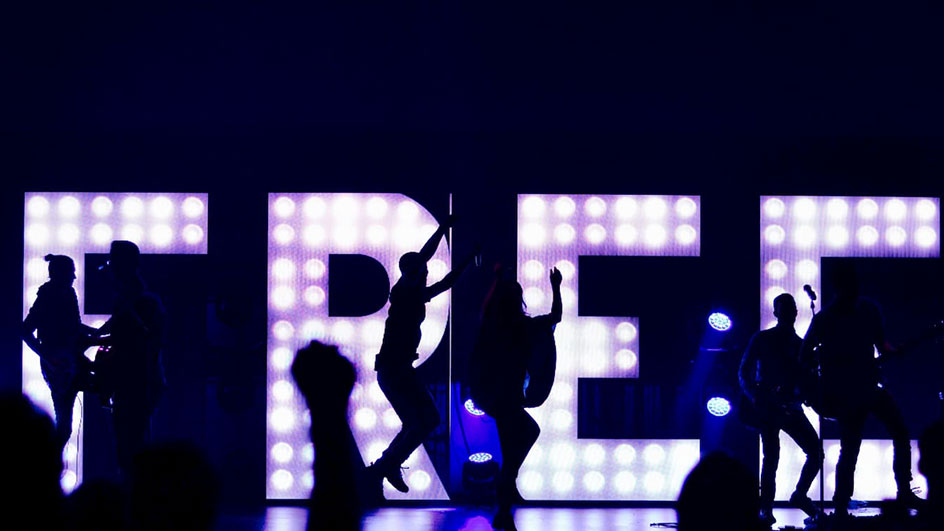
Nov 22, 2019
It’s hard to analyze the power of music.
Even in a culture known for its short attention span and obsession with visual media, music continues to be a driving force behind what we enjoy the most.
Downloading music has been a part of the entertainment industry for decades. Everybody — from Twitch streamers to wedding videographers to people with long, boring commutes — has wanted to get a free song at some point.
But is free music really a thing anymore? Where can you find good songs that are actually worth downloading? Can you safely and legally use downloaded songs in your projects? And what do you need to know about the different kinds of music licensing?
Today is your lucky day because we are going to answer all of those questions for you. Think of this page as a personal guide to free music for content creators.
That way, you’ll know exactly how and where to find great music to use in your projects.
What Does “Free Music Download” Actually Mean?
Let’s be honest: We’ve all heard the saying that nothing in life is free. It was one of those cliches that our grandparents used to say. (Usually in a pretty patronizing way, if we’re being honest.) But give them some credit, because the concept is based on real-world principles.
And the digital age has only made that old idea even more accurate.
The internet has transformed everything. It’s helped build a global marketplace that ties most of the planet together. And this connection means people can assign a value to anything, from half-eaten food to recycled waste from a celebrity’s neighborhood.
Music is an integral part of the human experience, and always has been. That’s why it shows up in every kind of entertainment we enjoy, from video production to podcasting. Which, in turn, makes music a valuable commodity to the people who own the rights to it.
But people love free stuff. And that includes music, even when it’s not beneficial to the artists.
(We won’t get too philosophical here, but it’s important to remember that music is part of a digital marketplace. Using music has a cost that someone has to pay.)
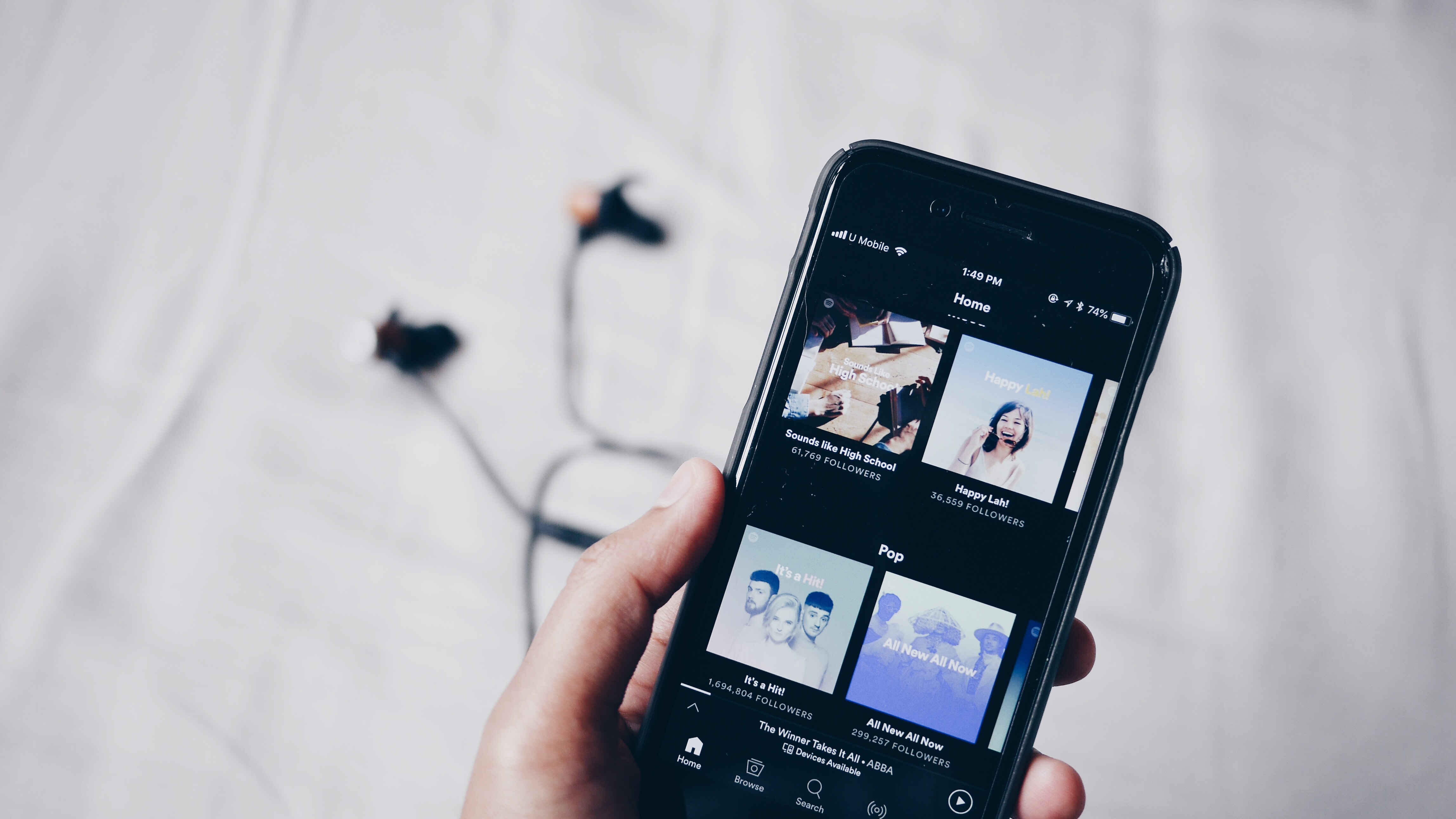
Music at your fingertips — all day, every day
In the past decade, the idea of “free music” transitioned from internet piracy to subscription music services. Spotify dominates this new market, with almost 250 million active users each month — and that doesn’t even take into account how many devices each user listens on.
But Spotify is a music streaming service. It’s possible to listen to music for free on the big-name platforms, but downloading tracks for use in creative projects is a whole different kind of puzzle. And because it’s so different, it has its own set of obstacles to watch out for.
The challenge for you is knowing where to find free tracks and how to use them in a safe, legal way. Because really, nobody wants to lose everything in a music copyright battle.
What Are The Risks?
We all know that music can add to storytelling, tug at emotions, and even shape the movement of a scene. And if you’re looking for free music to use in your projects, you know that great songs can be a huge asset.
In order to speed up the process of finding songs, you might default to a classic “free music download” Google search. Maybe that seems like the safest or easiest option. Maybe it’s the only way you’ve ever searched for songs.
We’re not here to judge how you download your music. But we think the chances are good that you want songs that fit your budget and won’t get you slammed with copyright claims.
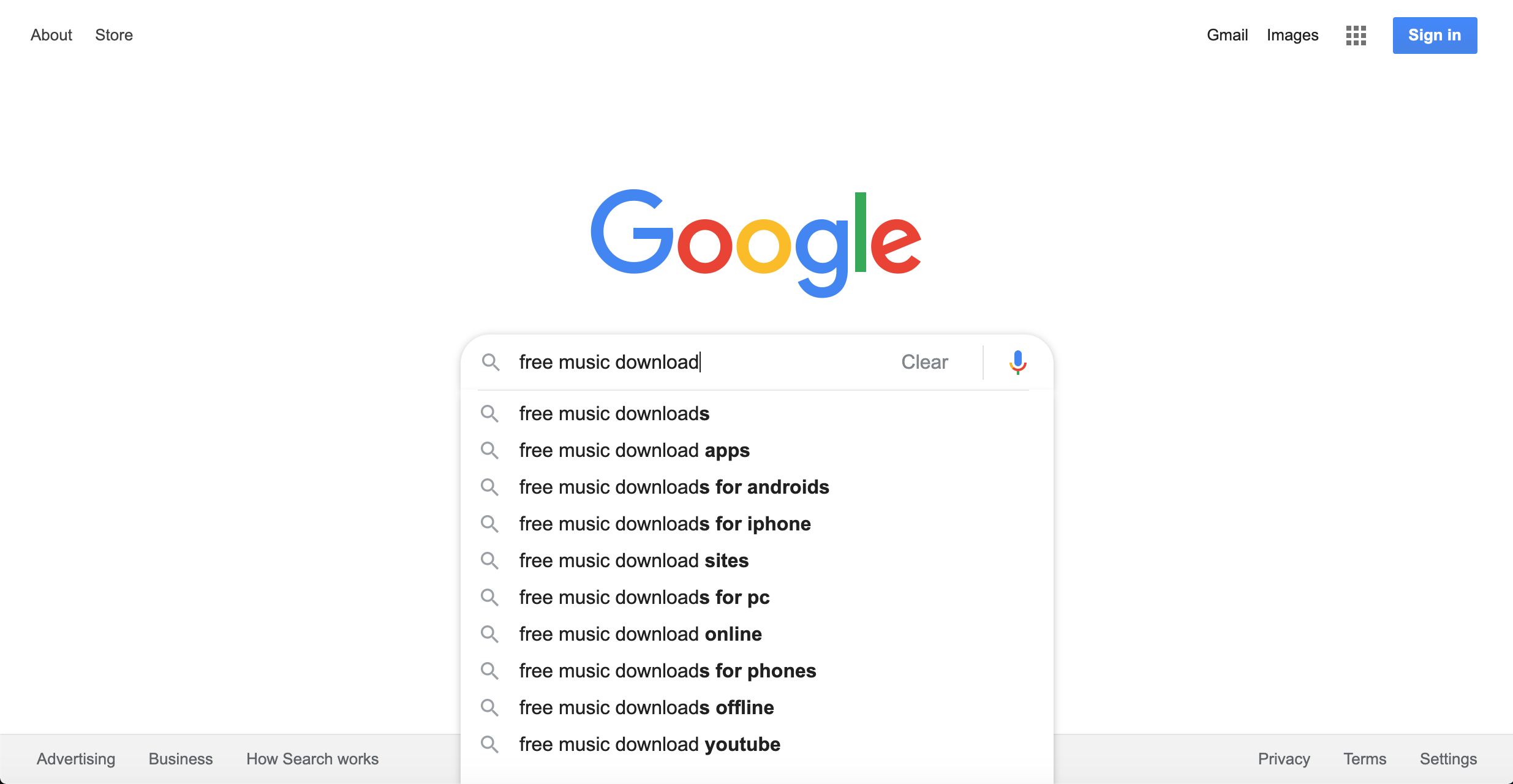
Sometimes the easiest way to find something isn’t exactly the best way...
It’s important to understand the basics of music licensing and the consequences of trying to cheat the system (or even just getting music from the wrong place).
At the bare minimum, a copyright infringement could cost you anywhere from a polite cease and desist email to a $100,000 fine. And on the “Really, Really Bad” side of the chart, your punishment could be as much as a $250,000 fine, 10 years in prison, or both.
Don’t worry, we’ll talk more about licensing in a bit. The only thing you need to know now is that you must have a license to use another person’s music in your work. Even after you find a free song, if you can’t prove you have a license to use it, you are still at risk.
Just look at what happened to YouTuber Matt Lowne when he used a sound he thought was from YouTube’s official audio library, but in fact was not from the official source.
We understand this can make things a bit...complicated. In fact, most people can’t afford to license individual tracks for a single video. Unless you’re Coca-Cola or Toyota, you probably don’t have a $10,000 music budget for whatever project you’re working on now.
This is one reason why many people look for shortcuts around licensing and royalties. But once you realize the punishments around copyright laws, it’s hard to justify gambling with such high stakes.
But that doesn’t address the issue of getting music for your videos. More importantly, you still want tips for finding songs that are cheap (ideally something in the ballpark of “free”) and still high quality.
How to Safely Find Free Music
“Free music” is like Bigfoot. It might exist somewhere, but many of the places where you’d look are unsafe, unreliable, or both. And very few of them will provide quality songs and also protect you from legal hassles.
The good news is that you aren’t alone. More and more content creators are out there every week looking for music to use in projects. And that growing number is encouraging companies to create for new solutions that will benefit you.
Granted, most of these companies have restrictions on how you can use the music on their sites. (It’s hard to cover full licensing costs when they charge $0.) But depending on how much time you have to spend, there are places where you can find something free and legal.
Here are a few of the most popular — and proven — places to start your search:
Jamendo
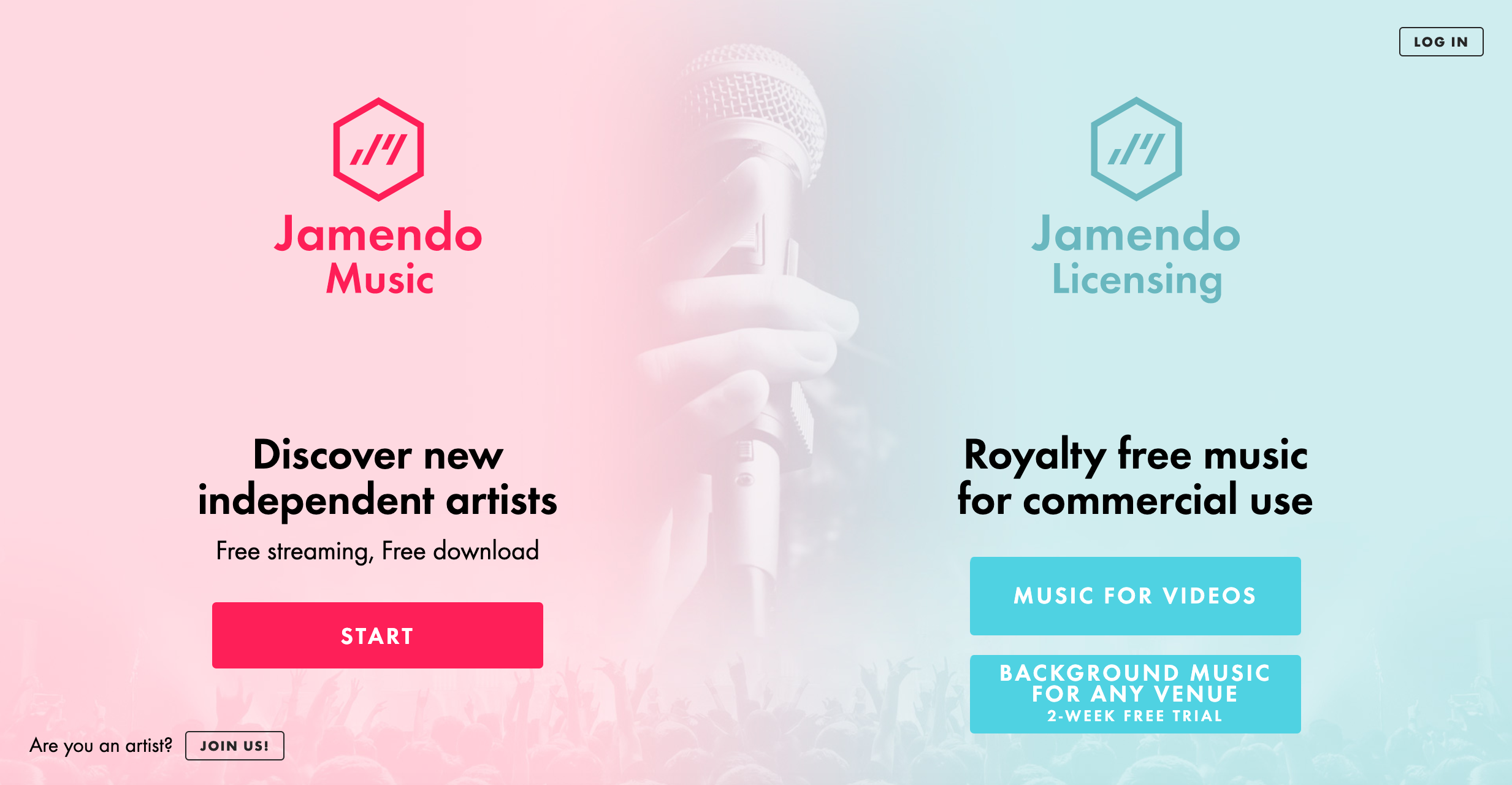
You can download over 220,000 songs from Jamendo. The tracks are only usable for non-commercial projects unless you pay a monthly premium. It’s also important to note that the details of the licenses are chosen by each individual artist.
CCTrax
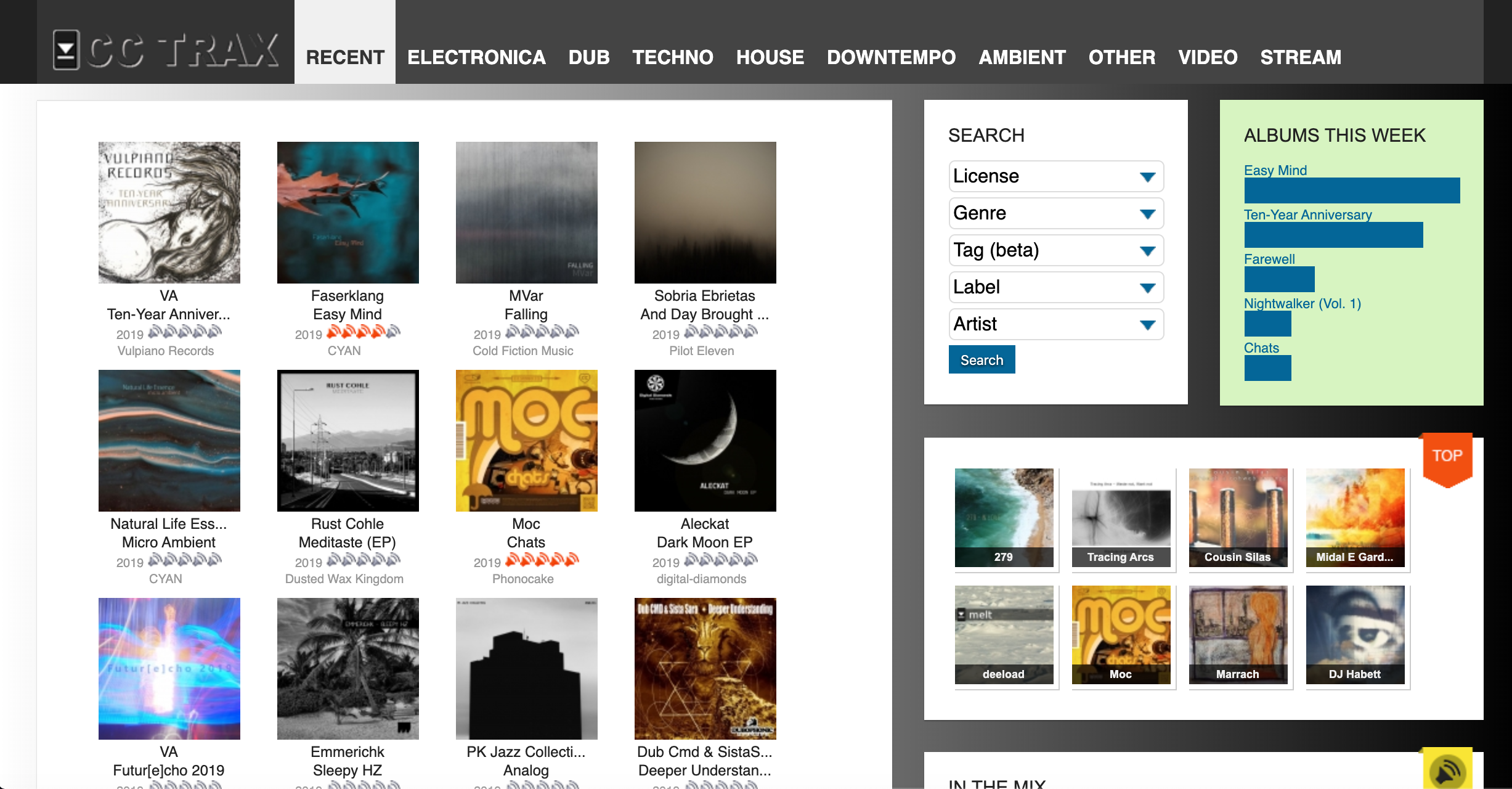
This option includes more than 9,000 songs and 1,500 full albums. You don’t need an account to access content from CCTrax, but you will need to get in touch with the artist and figure out the details of a licensing agreement.
Free Music Archive
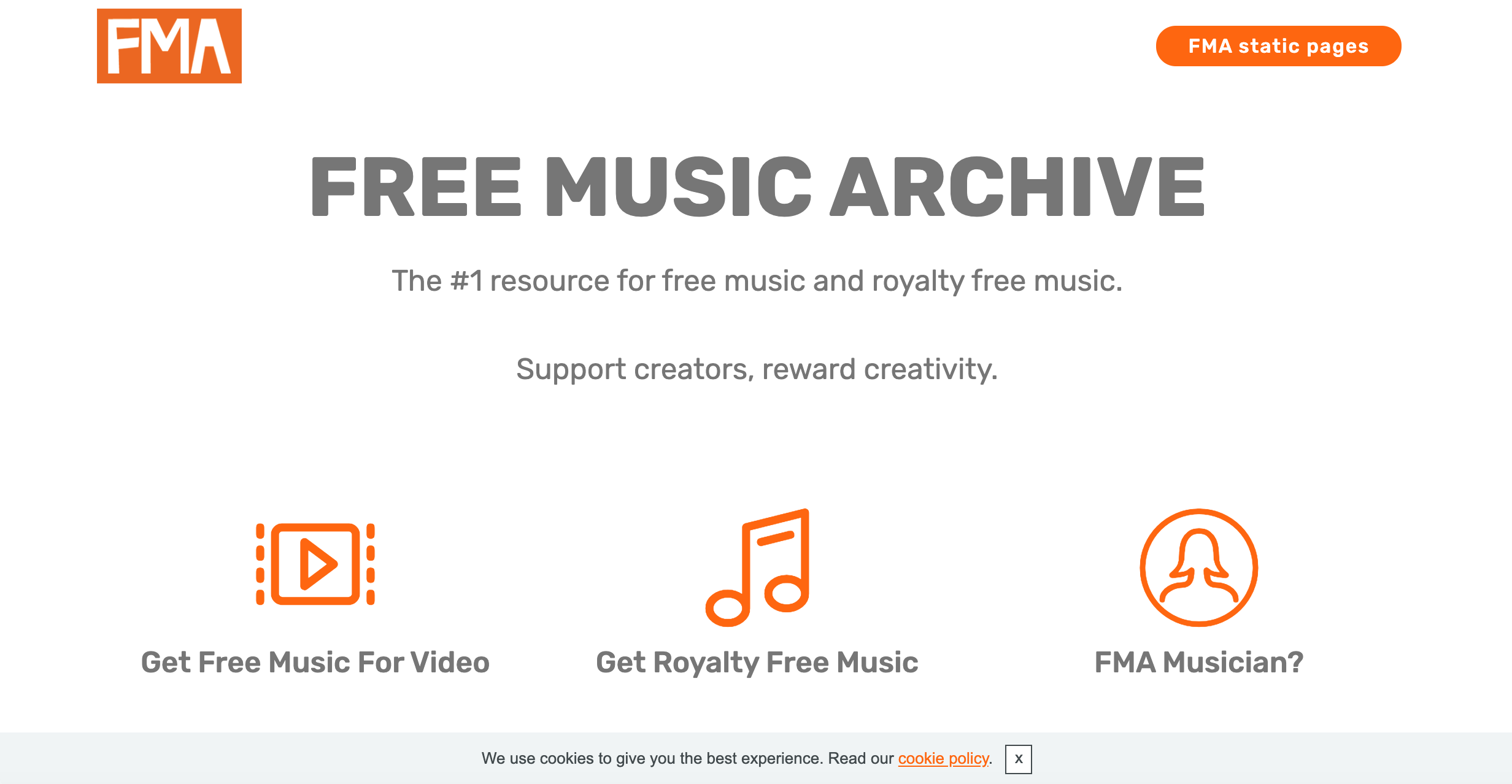
The Free Music Archive offers over 5,000 songs. There’s no sign-in required to download the music, but there also isn’t a way to search for free songs.
HearThis
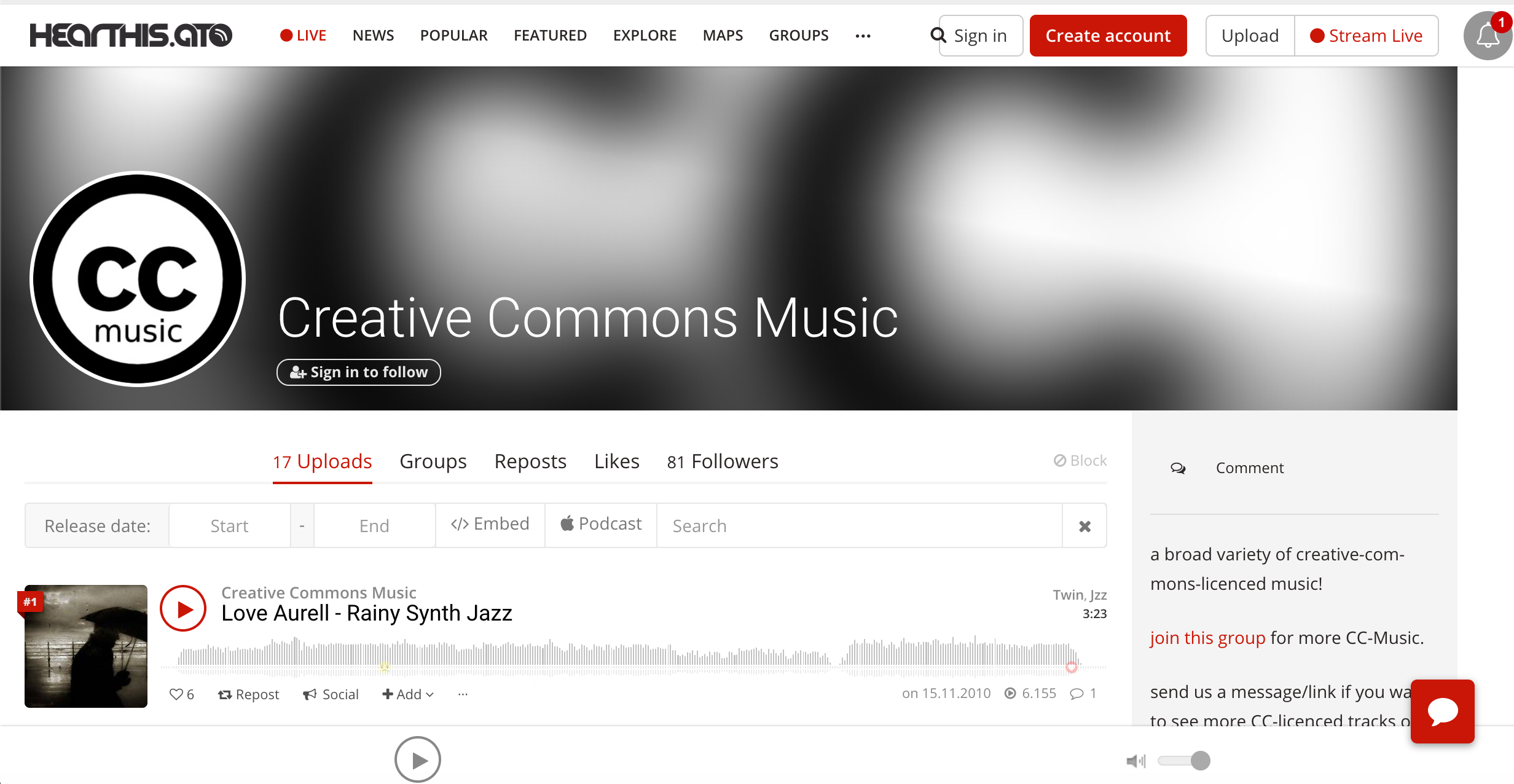
HearThis offers thousands of songs posted by the artists themselves. It’s a collaborative type of environment, and there’s a section dedicated solely to music that can be used for non-commercial projects.
YouTube
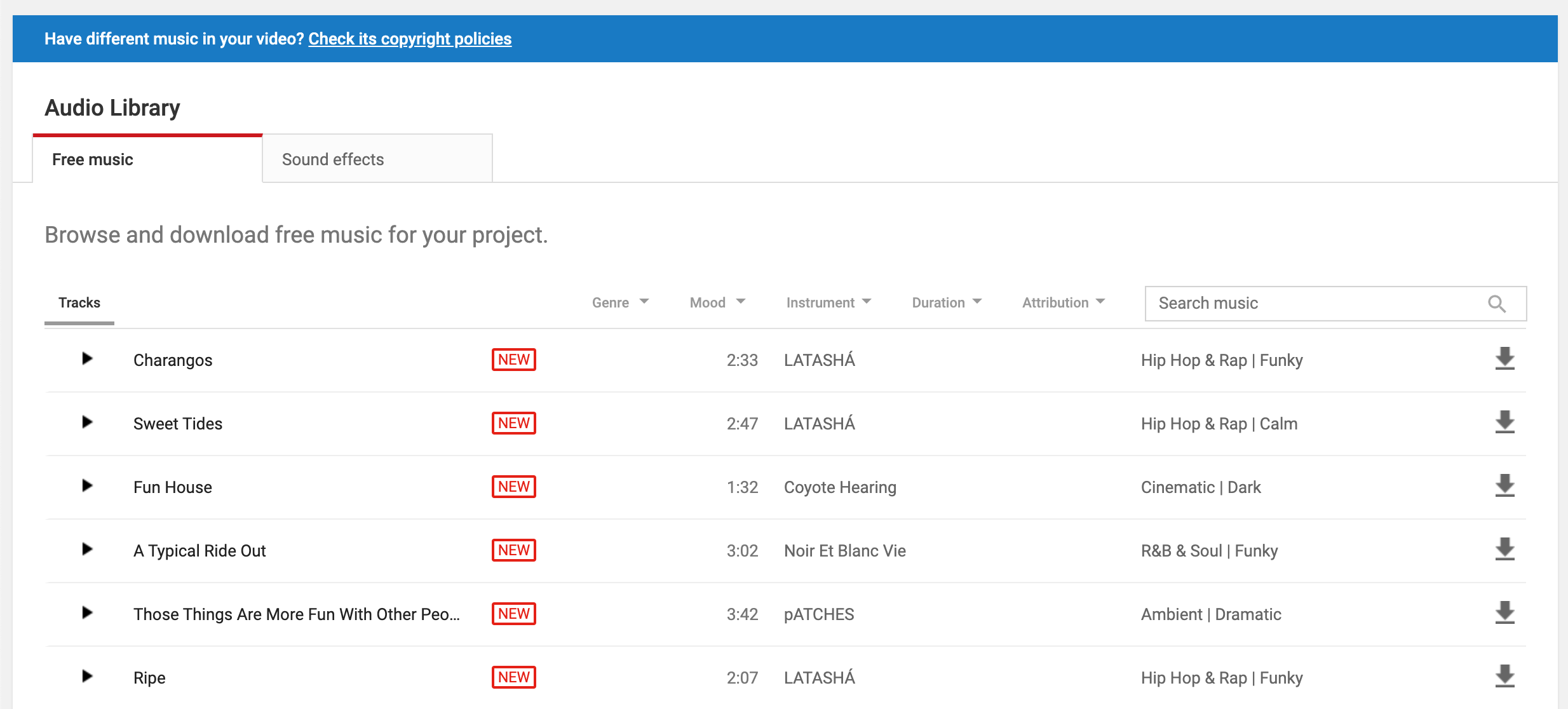
The YouTube Audio Library is a hidden gem for free music, but there are some limitations. There are less than 1,000 songs — most tracks explain the licensing you’ll need to use them — and you need a Google/YouTube login to access them.
Various Indie Artist Sites
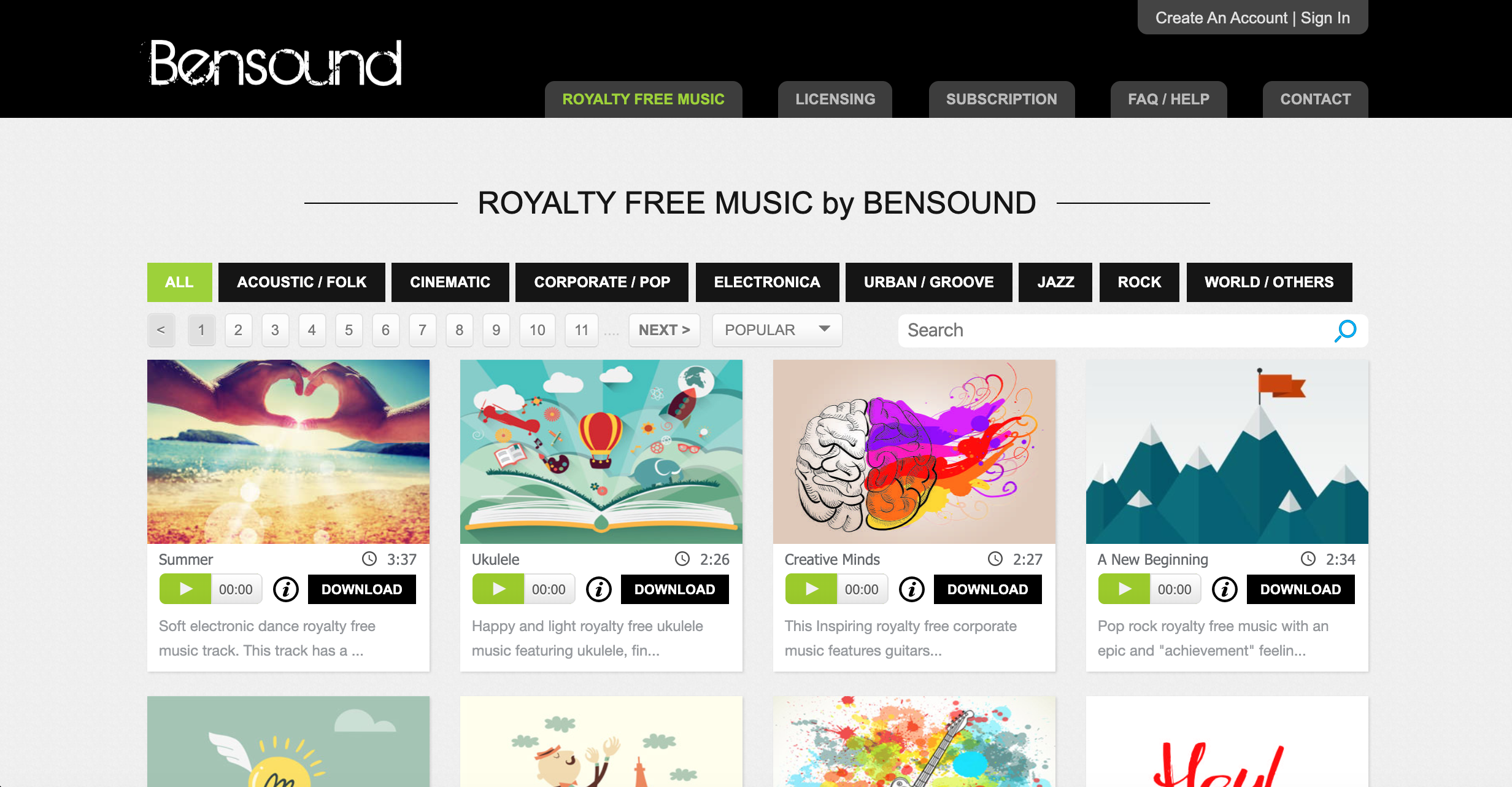
Another popular option for free music is finding solo artists who distribute their music for free. Artists like Bensound, Josh Woodward, and Scott Buckley are just a few examples of people sharing their music in exchange for composer credit in the final product.
At this point it’s probably obvious that finding free music will take some work. And even once you pick a free song you like, there are still details to work out. This all ties into the last big hurdle for content creators to deal with when it comes to finding free music for videos.
Music licensing.
How Complicated Is Music Licensing?
Music licensing is a convoluted puzzle, and trying to find a shortcut can land you in hot water. (We’ll give you a high-level view of it in this section, but you can read all about it here.)
When an artist releases a song, they might be only partial owners of that music. If the artist signed with a record label, they have partial ownership too. So do any songwriters who helped compose the song. And if those songwriters are part of a music publishing company, that company might claim ownership.
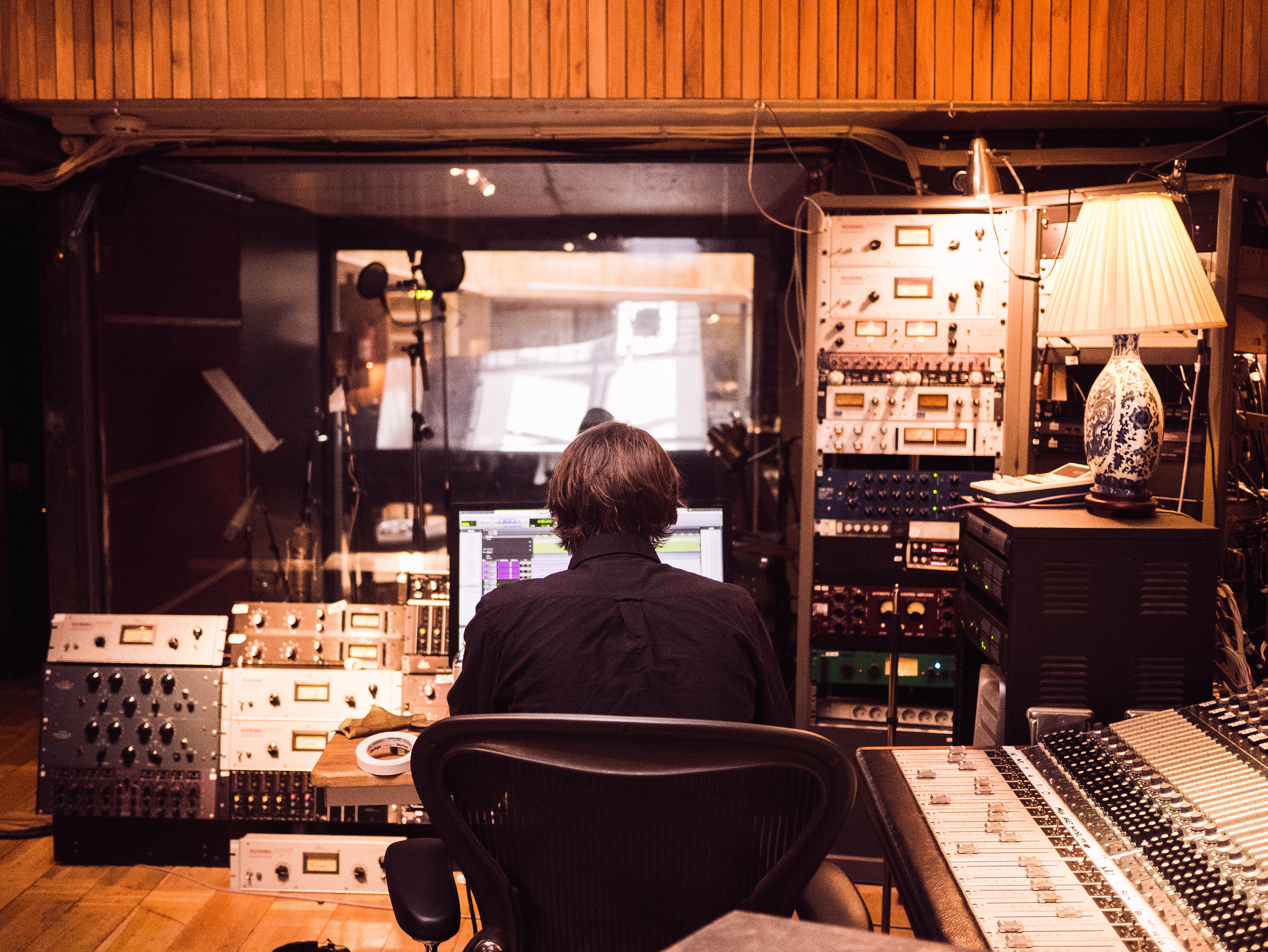
Recording an album is more than just a musician with a guitar and mic
In fact, everyone wants a piece of the “ownership” pie because it earns them royalty payments.
Oh, and if it wasn’t already confusing enough, there are different types of licenses that a particular song could hold. Not to mention different tiers of licensing inside those different types of licenses.
Think of it this way: Music licensing is a way to make sure that everyone gets paid for their work.
And most of those people can get protective of the money they make off their songs. As a content creator, you can’t afford to mess around in the murky water where music label sharks — and their legal teams — hunt.
Just because you download a song for free doesn’t mean you’re licensed to use it. And even if you know what kind of license your song download included, you still need to find out which specific use cases (podcasts, videos, etc.) that licenses covers.
We already established that there’s really no such thing as “free,” but it’s especially true in the music industry. And this is where royalty-free music comes in.
Are There Alternatives Available?
Music licenses serve two important roles. First, they make sure the artist (and anyone else who can claim ownership of the music) gets paid. And second, it protects you from any copyright claims after you use that music in your projects.
Traditional music royalties were set up so that copyright holders are paid a certain percentage any time a song is used. Royalty-free music bundles all of those recurring payments into one fee that you pay upfront.
Of course, the price of that fee varies based on the song. But it’s still a much more manageable option for anyone who doesn’t work for a major corporation.
You have a few other options, though. There are companies — like Soundstripe — that offer libraries of royalty-free songs because they cover the royalty fees for you.
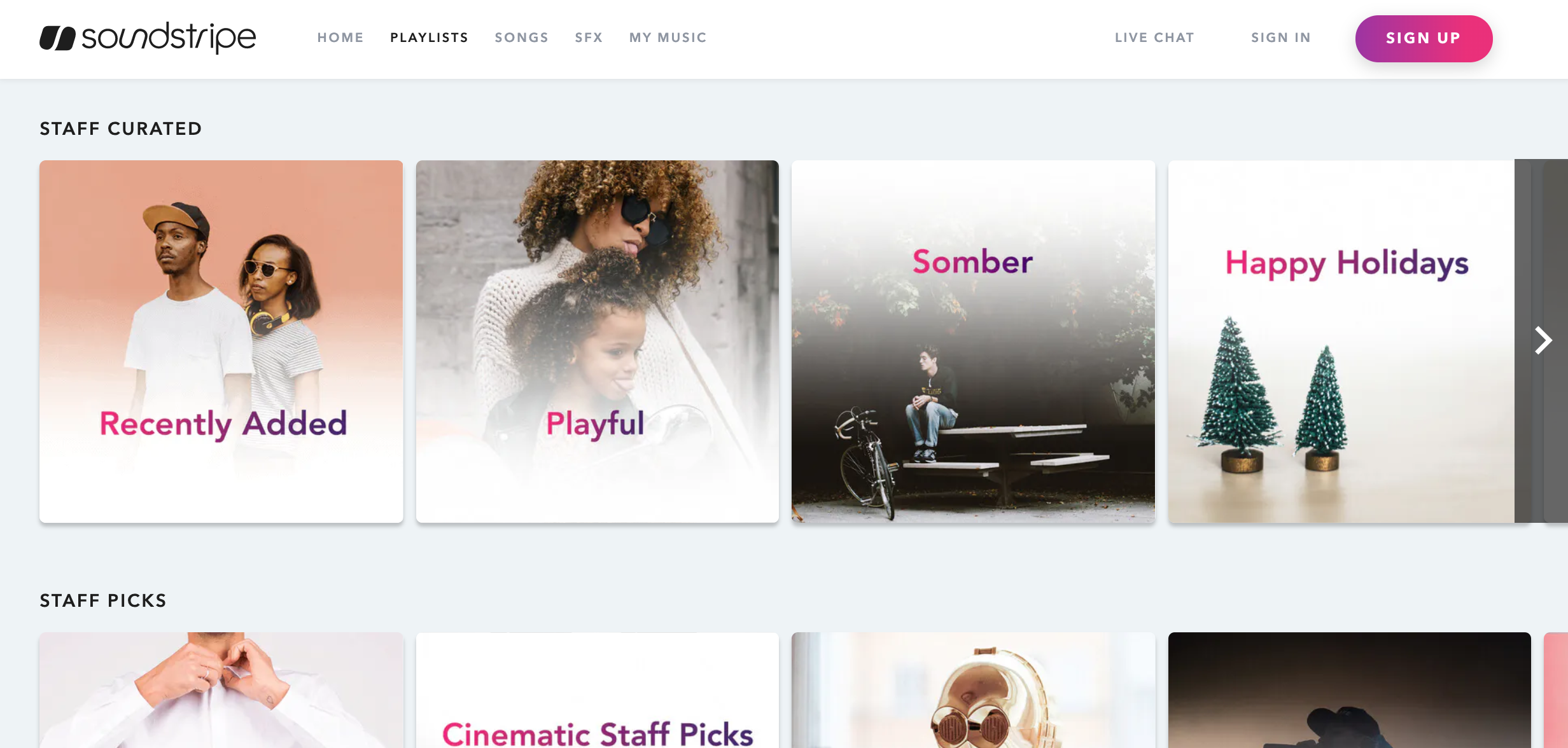
Here’s how it works. These companies pay artists and labels to license their music, then split up that cost across their subscribers. That way, you get access to all of that music but only pay a single monthly fee to access it (instead of paying royalties for each song you download).
In a way, it’s no different than hiring an accountant to manage your taxes. Choosing a royalty free music subscription means you are trusting a team of experts to manage the licensing stuff for you.
You get a library of easy-to-access music, and you also don’t have to worry about copyright claims. It’s literally the best of both worlds for the same cost as a couple lattes.
Making An Informed Choice
As a content creator, the “Where do I find free music?” issue can be an obstacle between you and finishing a project. In other words, it could stand between you and a paycheck. When that affects multiple projects at the same time, it becomes something you need to figure out fast.
The good news is that you don’t have to lose any more sleep over this issue. Now you’ve got an understanding of what “free music” actually means, where to find it, what alternatives exist, and how this industry is changing to help you get what you need for a price you can afford.
And once you understand the potential risks in using free music, you may decide that a subscription service might be worth looking into. It’s a way to get the stress of licensing off your plate and hand it off to a company that already operates in that world.
That way, the only thing you need to worry about is sorting through libraries of great music and finding the perfect song for each of your projects.
